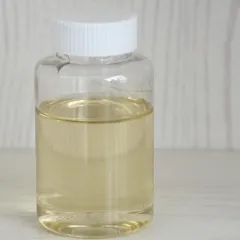- Home
- Products
- Elementary
- Boride Powder
- 3D Printing Powder
- Sulfide Powder
- Oxide Powder
- Carbide powder
- Nitride Powder
- Silicide Powder
- Hydride Powder
- Telluride Powder
- Selenide Powder
- Stearic Acid Series
- Phosphide Powder
- Nanoparticles
- Metal Alloy
- MAX Phase
- Lithium Battery Anode
- Surfactant
- Molecular sieves
- Concrete Admixtures
- Cladding of metals
- News
- Blog
- Contact
- About
AEMES Disodium Laureth Sulfosuccinate CAS 40754-59-4
AEMES is a foaming detergent with strong detergency and good washing, emulsifications, dispersions, wetting and other functions. It has a high foaming power and is easy to rinse. Solid content: 30 %
Description of Disodium Laureth Sulfosuccinate :
Physical state and appearance: Disodium lauryl sulfosuccinate is usually a white or light yellow powder or crystal, odourless or slightly sulfurous.
Solubility: It dissolves easily in water, forming a transparent solution. In addition, it is also soluble in most common organic solvents.
Chemical properties: Disodium lauryl sulfonate succinate is easily hydrolyzed under strong or base conditions, resulting in corresponding sulfonic and succinic acid. Under normal conditions, this hydrolysis reaction is relatively slow, so the stability of the compound is good.
Surface activity: Due to its molecular structure, disodium laurate succinate has good surface activity and can reduce the surface tension of water. This allows it to play an important role in many applications, such as cleaning, cosmetics and personal care products.
Foam properties: Disodium lauryl succinate produces a rich foam when dissolved in water, a property that makes it particularly useful in certain cleaning or applications where foam is required.
Stability: Disodium lauryl sulfonate is stable under normal storage and use conditions. It has a certain tolerance to light, heat and common oxidants.
Biocompatibility and safety: Disodium laurate succinate is considered safe at normal use concentrations. However, as with other surfactants, prolonged heavy or improper use may cause skin or mucous membrane irritation.

Technical Parameter Disodium Laureth Sulfosuccinate
| Product Code | Shortname | Solid content | PH | Odor | Appearance |
|---|---|---|---|---|---|
| Disodium Laureth Sulfosuccinate | AEMES | 30% | 5-7 | A slight characteristic smell | Light Yellow Liquid |
Applications of Disodium Laureth Sulfosuccinate:
Personal Care and Cosmetics Industry: Disodium laurate succinate is widely used in personal care and cosmetics. It produces a rich foam with good moisturizing and lubricating properties, so it is often used to formulate personal care products such as shampoo, body wash, facial cleanser and body lotion. It helps to clean the skin and hair while providing a good feeling of use.
Oral care products: Disodium lauryl succinate produces a rich foam that helps clean the mouth and remove plaque and bacteria, positively affecting oral hygiene.
Pharmaceutical industry: In the pharmaceutical industry, disodium lauryl sulfonate succinate can be used to prepare pharmaceutical preparations, such as oral drugs, injections and topical drugs. As an emulsifier or solubilizer, it helps to dissolve and stabilize the drug and improve its bioavailability.
Food industry: In the food industry, disodium laurate succinate can produce food additives, such as emulsifiers, stabilizers and preservatives. It helps to improve the taste, texture, and stability of food and extends its shelf life.
Petroleum and mining industry: In the petroleum and mining industry, disodium laurate succinate can be used to enhance oil recovery and the mobility of crude oil. It can also be used as a lubricant and emulsifier in drilling fluids and mining operations to improve efficiency and safety.
Agriculture and pesticide industry: In the agriculture and pesticide industry, disodium laurate succinate can be used to prepare pesticides such as insecticides, fungicides, and herbicides. As an emulsifier and dispersant, it helps to improve the solubility and stability of pesticides, increase the adhesion and penetration of pesticides, and thus improve the control effect.
Production Method of Disodium Laureth Sulfosuccinate:
Esterification reaction
Ingredients: Prepare lauryl alcohol, succinic acid and catalyst (such as sulfuric or phosphoric acid), mix them and stir well.
Esterification reaction: under a certain temperature and pressure, the mixture is heated to esterify lauryl alcohol and succinic acid under a catalyst. To promote the reaction, a certain amount of water-carrying agents (such as benzene or toluene) can be added to remove the water generated during the reaction.
Separation and purification: After the reaction, the product is separated and purified to obtain laurate succinate.
Sulfonation reaction
Preparation of sulfonator: Dilute concentrated sulfuric acid into a certain concentration of sulfonator and prepare an appropriate amount of water and sulfate as a neutralizer.
Sulfonation reaction: The lauric acid succinate is sulfonated with concentrated sulfuric acid. The sulfonation reaction is usually carried out at higher temperatures and pressures to facilitate the reaction.
Neutralization and washing: After the reaction, the free sulfuric acid in the product is neutralized with a neutralizer and washed to remove excess sulfate and unreacted impurities.
Dehydration and drying: The product is dehydrated to obtain crystals or powders of disodium lauryl sulfonate succinate. Finally, it is dried to obtain the final product.
Packing & Shipping Disodium Laureth sulfosuccinate
Disodium Laureth Sulfosuccinate is available in a variety of different packaging options.
Disodium Laureth Sulfosuccinate packing:
1kg/bottle or 25kg/barrel.
Disodium Laureth Sulfosuccinate shipping:
Once payment has been received, goods can be shipped by air, sea, or express.
Disodium Laureth Sulfosuccinate Properties | |
| Alternative Names | N/A |
| CAS Number | 40754-59-4 |
| Compound Formula | C12H25(C2H4O)nCOCH2CH(SO3Na)COONa |
| Molecular Mass | N/A |
| Appearance | NA |
| Melting Point | N/A |
| Boiling Point | N/A |
| Density | N/A |
| Solubility In H2O | N/A |
| Exact Size | N/A |
Disodium Laureth sulfosuccinate Health & Safety information | |
| Sign Word | N/A |
| Hazard Statements | N/A |
| Hazard Codes | N/A |
| Risk Codes | N/A |
| Safety Declarations | N/A |
| Transport Information | N/A |
Inquiry us
PREVIOUS Surfactant
SSS Sodium P-styrene Sulfonate CAS 2695-37-6
NEXT Surfactant